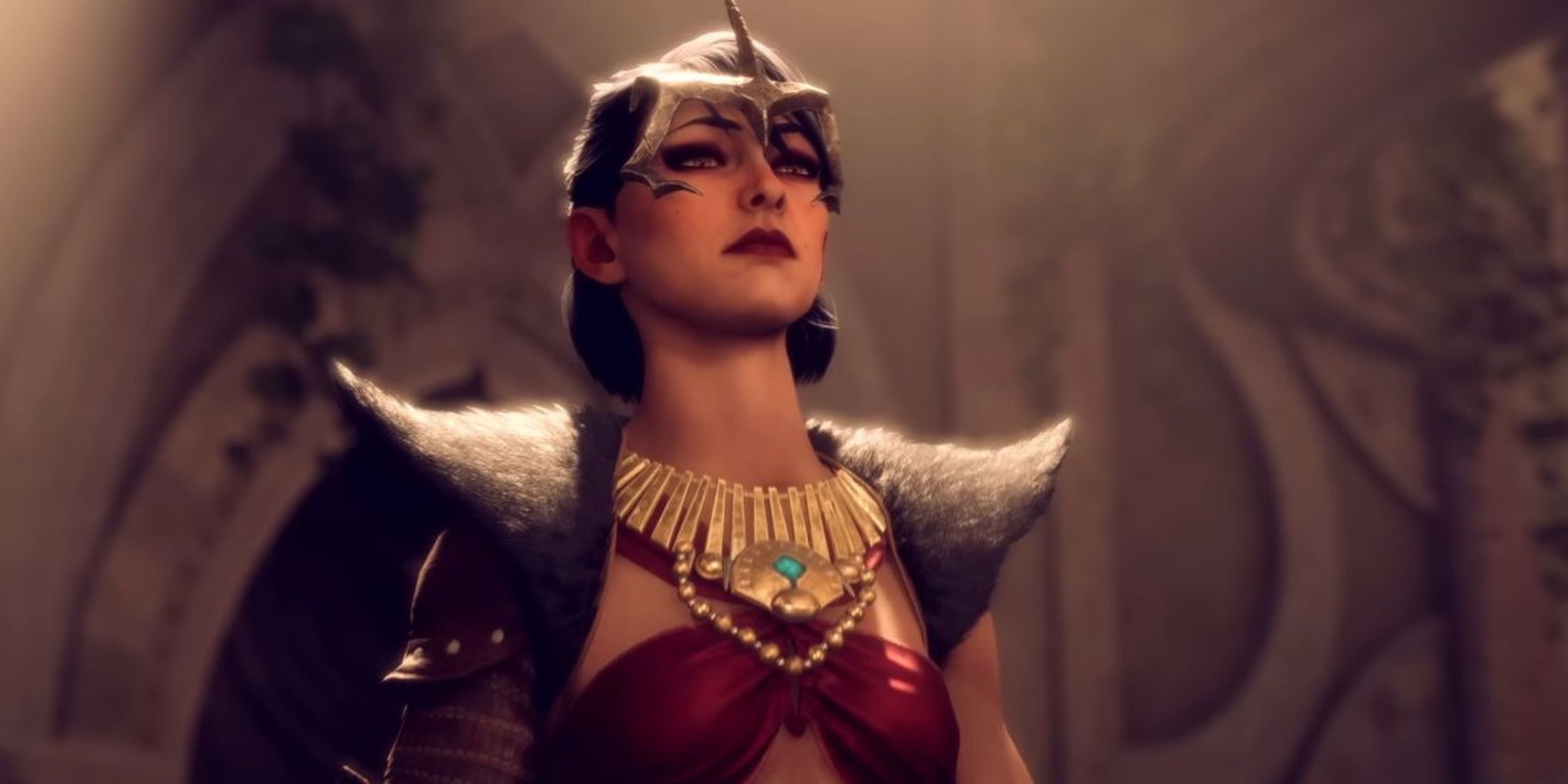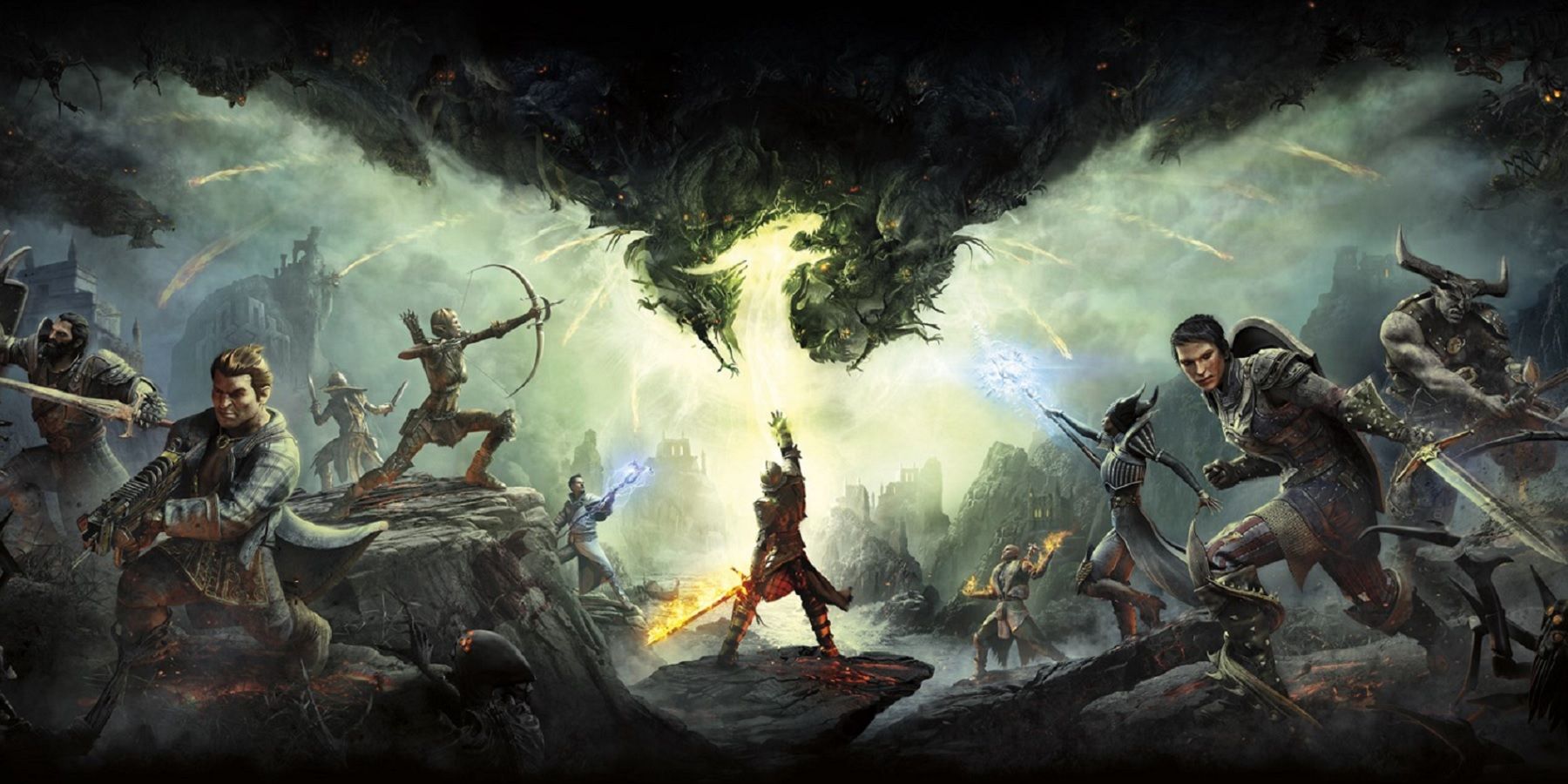MAJOR SPOILERS FOR DRAGON AGE: THE VEILGUARD AHEAD
The Executors are first mentioned in Dragon Age: Inquisition through War Table missions; in this title, they play such a small role that anyone could easily flip through and miss them. That may have been the intent. Since their introduction, the Executors have been a mysterious faction in the world of Thedas, likely hailing from Across the Sea. Dragon Age: The Veilguard not only doubles down on this mystery, but it heavily implies that they may be the next threat to Thedas. It also smells like a Red Herring, but whether that’s true or not remains to be seen.
There are still plenty of question marks surrounding the enigmatic Executors and their overarching goals, but the mystery at the heart of them also appears to be the mystery at the heart of Thedas. Dragon Age: The Veilguard reveals substantially more about the Executors than Inquisition, but for anyone curious, this is their complete lore so far.

Related
Every Cameo in Dragon Age: The Veilguard Explained
Dragon Age: The Veilguard includes a range of returning characters who featured in previous stories, some with some unexpected consequences.
What Dragon Age: Inquisition and Tevinter Nights Reveals About the Executors
The Executors & The Inquisition
The first appearance of Executors in Dragon Age is Inquisition, with their symbol (a downward triangle with wave-like lines) appearing at the organization’s various outposts. Using the War Table, players can investigate and learn that the symbol is connected to agents who spoke on behalf of Powers Across the Seas. Cullen dismisses them while Leliana wants to investigate further, resulting in two different outcomes. If Cullen is chosen, three Inquisition outposts are mysteriously abandoned, with a message saying that the Inquisition has the strength to defeat Corypheus and suggesting that harder days will soon come. The Executors are supposedly holding “vigil” for that day; however, the agents of the Inquisition in each camp disappear, with the message saying they “have given themselves of their own free will to a higher cause.”
However, if Leliana chooses to pursue them, the Inquisitor will receive a message complimenting Leliana’s skills in tracking them before they go dark. In this message, they claim not to be enemies of the Inquisition for the moment and, notably, as a “gesture of good will” share knowledge with the players. In both cases, the Executors vanish as quickly as they arrive.
Tevinter Nights Gives A Strange Physical Description
In “The Dread Wolf Takes You,” a short story within the collection Tevinter Nights, an Executor attends a meeting dedicated to sharing information about Solas and his plans. Solas, however, petrified them and cautioned Charter (of the Inquisition) of their power.
Despite having a physical presence there, they are clearly concealing their actual form. They are described as covered completely in robes, including a mesh over the opening of the hood, with a voice that was unidentifiable as male or female, young or old.
Key Takeaways
On their own, this doesn’t confirm much. However, of note:
- The importance of their appearance or, perhaps, lack of a solid appearance
- Connection, to some degree, of those across the ocean and/or the ocean itself. Of note is that Qunari fled the lands across these same oceans.
- The ability to slip Leliana of all people/make encampments of people disappear.
- I find the mention of “will” in both letters to be important, especially in the game where Corypheus loudly declares his actions as His Will.
What is an Executor?
I think the definition of “Executor” matters here, as there could be a reason they are not something bespoke like Qunari (in terms of racial name). An Executor, by definition, is a person or institution appointed by a testator, usually a deceased, to carry out the terms of their will. The question then becomes who is the Executor’s Testator, or whose will/legacy they are seeking to carry out?
What Dragon Age: The Veilguard Reveals About the Executors
Dragon Age: The Veilguard‘s secret ending reveals considerably more about the Executors and their plans, while a small location in Dock Town likely alludes to this as well. In Dock Town, players can find an investigation board drawing lines between the events of Dragon Age: Origins, Dragon Age 2, Dragon Age: Inquisition, and Dragon Age: The Veilguard and mysterious black figures. One of these figures is off the board, likely indicating it is not from Thedas.
Dragon Age: The Veilguard’s Secret Ending Reveals What the Executors Have Done
Unlocked by finding three mysterious circles across Northern Thedas (which I’ll get into in a second), the Secret Ending is a series of slides revealing how the Executors have influenced Thedas over the past few years. It is accompanied by the following dialogue:
The storm, quelled. The sun, dimmed. The wolf, defanged. At last, we have balanced. Guided. Whispered. And soon the poisoned fruit ripens, we come.
The dialogue mentioning a storm, sun, and wolf plays over a slide showing Ghilan’nain, Elgar’nan, and Solas, suggesting that somehow disposing of the Evanuris played into their plans.
“At last, we have balanced” plays over a scene of five robed figures standing around a seemingly stabbed corpse, the Black City visible in the background. Of note in the stonelike background is a symbol of Tevinter. This may allude to the blood magic ritual by which the Magisters Sidereal entered the Fade at the behest of the “Tevinter Old Gods.” While there are seven magisters, it’s worth mentioning that this is not the first time five figures have been used to showcase them before, but it seems the Executors may have been involved here as well. Perhaps two of them were actually Executors?
“Guided” plays while an Executor appears around Loghain, King Cailian dead in the background, and “Whispered” plays while a form appears around Bartrand, with Knight-Commander Meredith and First Enchanter Orsino in the background. The next scene shows Corypheus and Flemeth, specifically when the destruction of the Conclave, with the dialogue “And soon the poisoned fruit ripens” playing while these two figures are replaced with an Executor-looking figure.
Finally, “We come” plays when their new symbol, much like the old, appears. However, its triangle is sharper, almost more draconic-like, while the waves appear to be more erratic. There are at least 14 bronze circles surrounding the symbol (when complete).
Some fans have used this secret ending to suggest that we are leaving Thedas in Dragon Age 5, which I don’t think is true. Thedas is the heart and soul of Dragon Age, and there’s plenty left to explore. Not to mention, the final words are “we come,” meaning they are coming to Thedas.
The Mysterious Circles
Each circle comes with its own codex entry, torn from the journal of an Elf named Saeris, the First of Clan Ersallae. The first codex says that they haven’t found a complete circle, just pieces, but that these pieces cause their skin to crawl. The Dalish Keeper suggests these are old artifacts, possibly connected to the Forgotten Ones.
The second codex reveals Saeris found a complete circle in the Deep Roads in a dark chamber that could not be properly lit, even with magic. The air is notably greasy, and Saeris describes the complete circle as cold to the touch, even when next to the fire. On it is the symbol of the Executors.
The third codex reveals Saeris investigated the greasy air, suggesting it is a sign of the mysterious circles, and also followed a collapsed section of the Deep Roads that led under the ocean. There, they fight an oddly dressed person in a “grey robe, grey helmet, and a mask,” presumably an Executor. This figure is incredibly fast, but as it rushes Saeris, they note that there is something wrong with its arm, which is described as changing and shifting. Saeris was paralyzed by fear of this individual, with only their companion saving them. The note ends with “Let the past keep its secrets.”
The Executor’s Dialogue
As important as the codices is the dialogue that plays when finding these mysterious circles. I think it’s important that they are not aggressive. Finding the first one indicates that they “predicted, expected, and hoped” that someone, The Veilguard in this instance, would “intercept,” presumably the Elven Gods. It also says “Learn. Adapt. Triumph.” With the other circles, they promise to show Rook something “soon” and express that defeating the Revenant Dragon was “fascinating” and “unforeseen.” With the Revenant Dragon being related to Blight in the Fade, it also suggests there is a connection between the Executors and the Blight as a concept.
Those Across The Sea Warred Against the Evanuris
As confirmed in the above codex entry, Those Across The Sea are as old as the Evanuris and were once at war with them, which begs a lot of questions about where they’ve been and what the Executors are.
Key Takeaways
The most obvious takeaway here appears to be that the Executors are responsible for everything that has happened since Dragon Age: Origins, manipulating events surrounding Loghain’s betrayal of King Cailan and Bartrand’s expedition into the Deep Roads. The Executors do not manipulate their decisions directly, but perhaps they strengthen their Will to do so. The corpse remains the biggest mystery; it seemingly means that the Executors were involved with the Magisters entering the Golden City, the cage of the Blight.
Notably, the Executors do not CLAIM responsibility for what happened with the destruction of the Conclave, instead shifting their attention to the poisoned fruit. This would line up with their investigation into these events and the Inquisition, but also everything that happened after Bartrand’s expedition – the events of DA2, Inquisition, and The Veilguard – can be tied together. What seems to be the message is that the Executors saw the Evanuris as something that could, would, or actually does stop them from completing their goals. The biggest question, of course, is why they are doing all of this, but why is often more easily answered after the fact.
If we accept the Executor title as a relation to the real-world US legal system, it’s worth pointing out that “poisoned fruit” is a metaphor for illegally obtained evidence.
The simplest answer is that the Executors wanted the Evanuris out of the way for their grand scheme, but that feels almost too easy, like it’s a Red Herring. When looking at their actions, that’s the most reasonable outcome—though Bartrand feels a bit convoluted. Given what we know about the Lyrium Idol now, it makes sense how it would tie in with Solas and the other Elven Gods and lead to these events, but it is quite a stretch from DA2 to Veilguard, however. They do seemingly have some kind of foresight, though. That said, the two other outcomes are the rise of Heroes in Thedas and the Weakening of the Veil. Dragon Age: The Veilguard ends with the message that the Veilguard remains vigilant, which inherently implies threats to the Veil are not over with yet. But what their actual goal and plans for Thedas are, well, fans will just have to wait and see.

- Franchise
- Dragon Age
- Publisher(s)
- Electronic Arts
- ESRB
- M For Mature 17+ // Blood, Nudity, Sexual Themes, Strong Language, Violence
- OpenCritic Rating
- Strong


















Leave a Reply